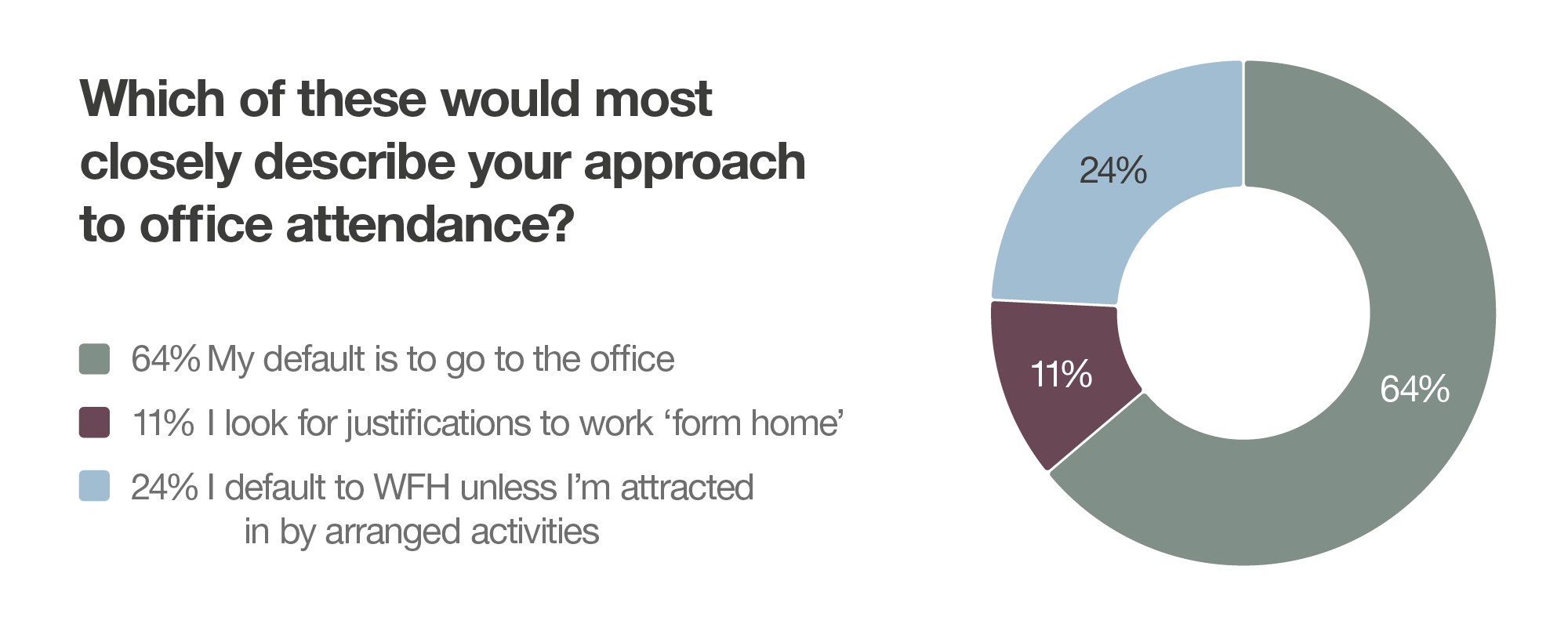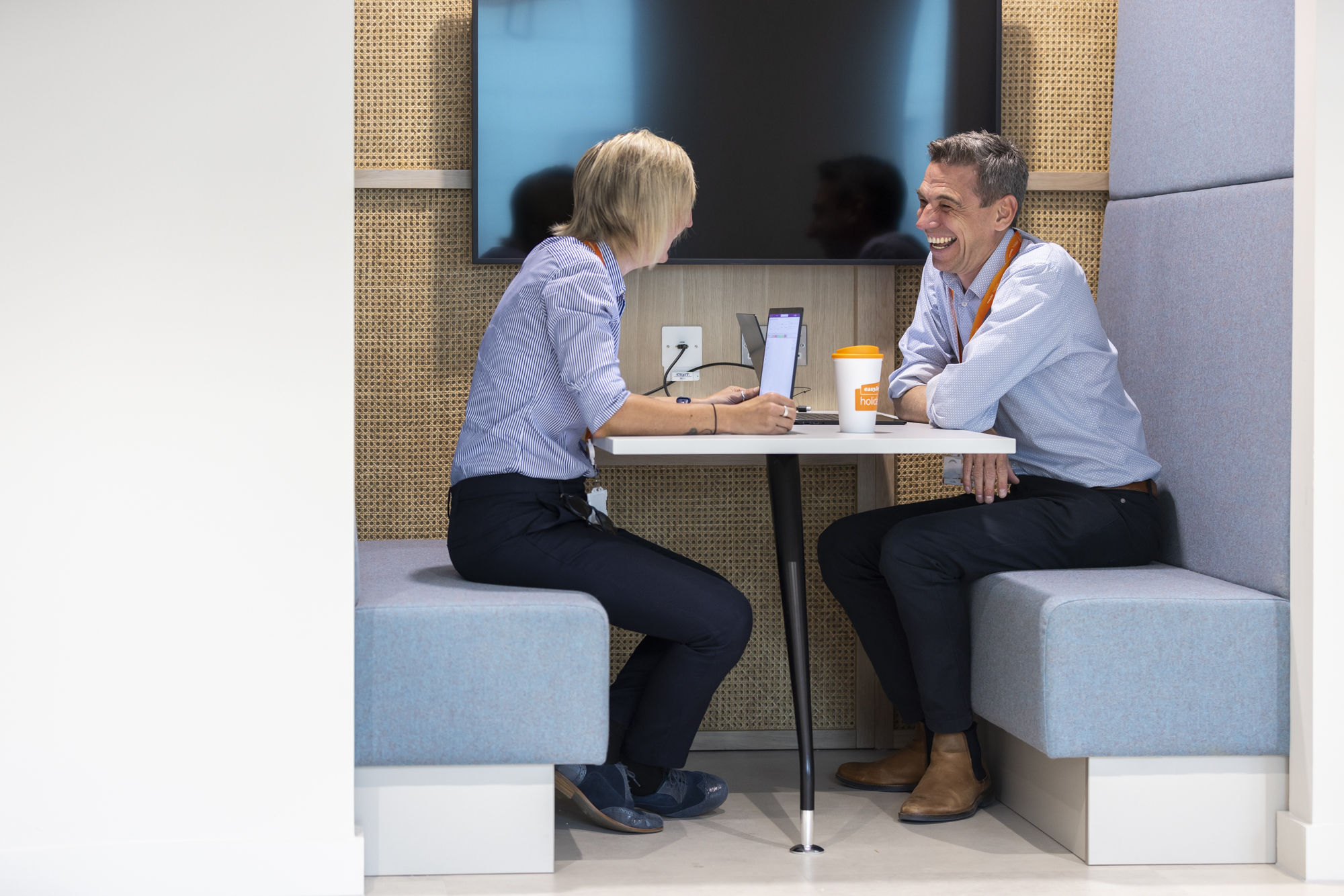In the evolving landscape of hybrid work, occupancy is often seen as a key metric for workplace success. But as organisations strive to rediscover the value of the office, it’s becoming clear that occupancy alone isn’t enough. The real measure of success lies in what happens when people are present – the quality of interactions, the relevance of activities, and the sense of connection that the space fosters.



Many companies where remote work is viable continue to offer it, yet there’s a growing desire to increase office attendance. According to Woodhouse’s Q2-25 live seminar survey, 64% of respondents said their default is to go to the office, while 24% default to WFH unless attracted by arranged activities. This suggests that while the office remains central, its pull must be purposeful.
The challenge is not just to boost numbers, but to ensure that attendance is meaningful. Occupancy should reflect the beneficial activities that take place – collaboration, mentoring, social connection –rather than simply filling seats.

Occupancy goals should be realistic and relevant, shaped by the nature of the work. In industries like architecture, law, or consulting, in-person collaboration is often essential. Roles that rely on specialised equipment or secure environments also demand physical presence. Conversely, knowledge-based roles may thrive with flexible arrangements.
The sweet spot lies in aligning occupancy with role-specific needs – not enforcing blanket policies, but designing spaces and schedules that support the work being done.
Across virtually all industries, social connection and collaboration are cited as the greatest benefits of office attendance. In the Woodhouse survey, respondents ranked “collaboration, learning and mentoring” as the most important aspect of office attendance, followed by “social connection and belonging”.
This aligns with broader research showing that belonging and interpersonal relationships are key drivers of engagement and retention. In fact, 49% of respondents said the prime benefit of being with colleagues in-person is “getting work done”, but 18% highlighted “building relationships”, and another 18% noted “maintaining a sense of belonging”.

.webp)
.webp)
.webp)
.webp)
.webp)
If we want to understand the true value of the workplace, we need better metrics. Rather than tracking occupancy alone, organisations should consider:
Utilisation rates per area – to understand how different spaces are used and guide future design.
Relationship-building activities – such as team interactions, mentoring sessions, or collaborative workshops.
Engagement levels – for example, the Woodhouse survey found 76% of respondents feel more engaged during in-person meetings.
These indicators offer a more nuanced view of workplace success – one that reflects the richness of human interaction.
Ultimately, setting occupancy goals for occupancy’s sake misses the mark. The goal should be occupancy of the right sort – where people come together for activities that matter, in environments that support their best work.
On a recent Woodhouse project for easyJet Airlines, there was a clear objective to increase attendance, but with a focus on making it meaningful attendance. We took the easyJet team through our full workspace strategy process and designed a space to facilitate increased quality interactions. The resultant space certainly achieved the objectives – the post-occupancy study showed an increase of over 200 people per day with signs of smoothing occupation throughout the week and a much more diverse use of the space.
In 2025 and beyond, the workplace sweet spot will be found not in numbers, but in meaningful presence. It’s time to shift the conversation from attendance to experience – and from occupancy to impact.